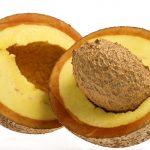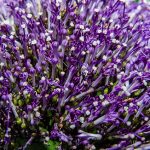
Two plants endemic to Iran and East India found to be effective against inflammation, hyperthyroidism
Wednesday, August 22, 2018 by Rhonda Johansson
http://www.naturalnewsherbs.com/2018-08-22-two-plants-endemic-to-iran-and-east-india-effective-against-inflammation-hyperthyroidism.html

A species of plant native to North East India and Car Nicobar island has been seen to provide medicinal benefits for patients suffering from inflammation. Pharmacological studies on the Terminalia citrina have concluded that plants that fall under this species can dramatically alleviate various symptoms of inflammation, including edema, peripheral pain sensation, and pyrexia. Scientists analyzed various plants from the Terminalia citrina species and saw that while the bark can be used as a diuretic, other portions of the plant (including the fruit) contain analgesic properties. More exciting is the conclusion that these plants can be adulterated with other plant materials for enhanced efficacy.
Scientists are astounded by the species’ capabilities to improve various conditions related to inflammation. Naturally (pun intended), they did not expect such a dramatic effect, particularly as the plant is only really used in folk medicine. All the same, empirical evidence has proven that pure extracts of Terminalia citrina can induce medically-sound benefits.
The species is typically characterized as an evergreen tree that grows to a height of around 20 to 30 meters tall. It is abundant in East Asia, Myanmar, Thailand, Malaysia, Indonesia, and the Philippines. Locals in the area use it for medicine, but also cut down the wood for trade. Fruits are not edible but their juices are collected and sometimes used as an astringent. Here in North America, Terminalia citrina can be found as a supplement.
Satureja: Another plant you should be aware of
A 2015 study on the oil taken from the Satureja khuzestanica plant genus found that they reduce oxidative stress. Mice models that exhibited hyperthyroidism were observed. Scientists saw that feeding rats with essential oil from the Satureja khuzestanica reduced the severity of hyperthyroidism. A statistically valid change was seen after 30 days, especially when the mice were given stronger doses of the oil.
Satureja khuzestanica is part of the family of Laminaceae and is endemic to the southern parts of Iran. It is a subshrub which grows to around 30 cm high and is densely leafy. It is used by alternative healers for its analgesic and antiseptic properties. A close review of the genus reveals that Satureja khuzestanica contains carvacol and several compounds known for their antioxidant and anti-inflammatory properties.
As with the Terminalia citrina species, you would be hard pressed to find a plant here. Instead, extracts from the bark can be found as tablets in your various holistic wellness stores.
The natural way
Time and again we find that natural remedies are better. Alternative medicine, however erroneous their reputation is, is effective, inexpensive, and most importantly, can usually be used with little to no side effects. The plants discussed above are just examples of the various ways our friends from the Middle East and Asia naturally alleviate pain or manage certain conditions. They may be a little hard to find so we’ve taken the time to list down other herbs and spices you can use to treat inflammation.
- Willow bark – The bark of the white willow is abundant in the chemical salicin, which is similar to the main ingredient in aspirin. It is far safer though. Herbalists have seen that willow bark can relieve discomfort caused by headaches, back pain, osteoarthritis, and other related conditions.
- Turmeric – The spice contains the compound curcumin which is one of the most powerful antioxidants out there. From reducing pain to curing cancer, scientists are only now determining the effects of medicinal uses for turmeric.
- Cloves – The spice can be used to ease nausea and treat colds. They may also be used to relieve pain.
For more information on the various herbs and spices you can use to heal yourself, visit Herbs.news today.
Sources include:





